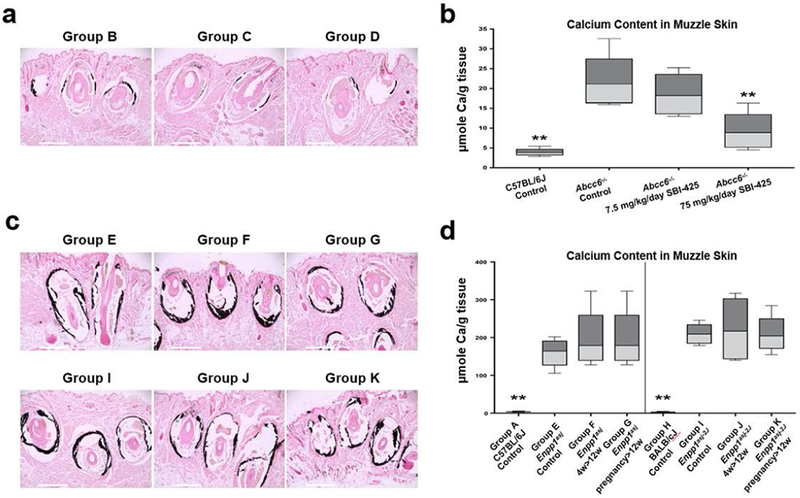Figure 3. Treatment with SBI-425 attenuated ectopic connective tissue mineralization in Abcc6−/− mice but not in Enpp1asj and Enpp1asj-2j mice.

(a) Tissues were collected from Abcc6−/− mice at 12 weeks of age and analyzed by histopathology with von Kossa stains. The Abcc6−/− mice treated with 7.5 mg/kg/day SBI-425 (Group C) had similar levels of mineralization in the muzzle skin to that of Abcc6−/− control mice (Group B). In contrast, treatment with 75 mg/kg/day SBI-425 revealed marked decrease of mineralization (Group D); (b) The chemical assay of calcium demonstrated significant reduction in the amount of calcium in the muzzle skin in the Abcc6−/− mice treated with 75 mg/kg/day SBI-425 (Group D); (c) The Enpp1asj mice (upper panel) and Enpp1asj-2J mice (lower panel) treated with 75 mg/kg/day SBI-425 postnatally (Group F and J) and in pregnant mothers (Group G and K) had similar levels of mineralization in the muzzle skin to their respective mutant mice on the control diet (Group E and I); (d) The chemical assay of calcium did not reveal differences in the amount of calcium in the muzzle skin in the treated mice. Values were expressed as mean ± SD; n = 7 - 20 mice per group. **p < 0.01, compared with Abcc6−/− (Group B), Enpp1asj (Group E), or Enpp1asj-2J (Group I) mice on control diet. Scale bar, 0.4 mm.
